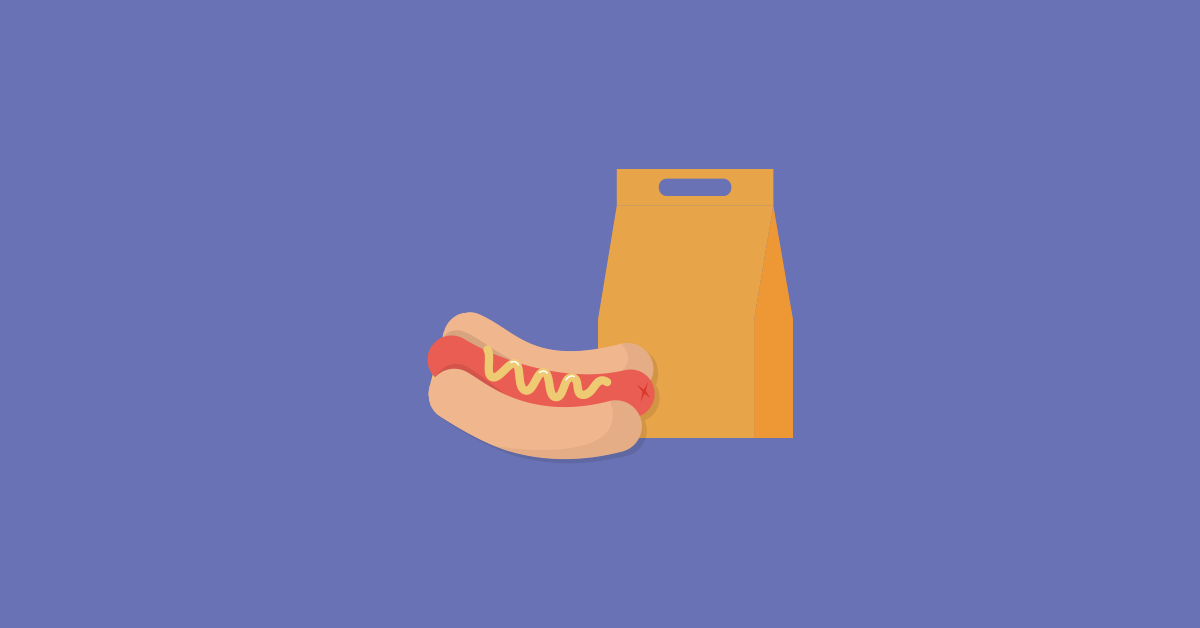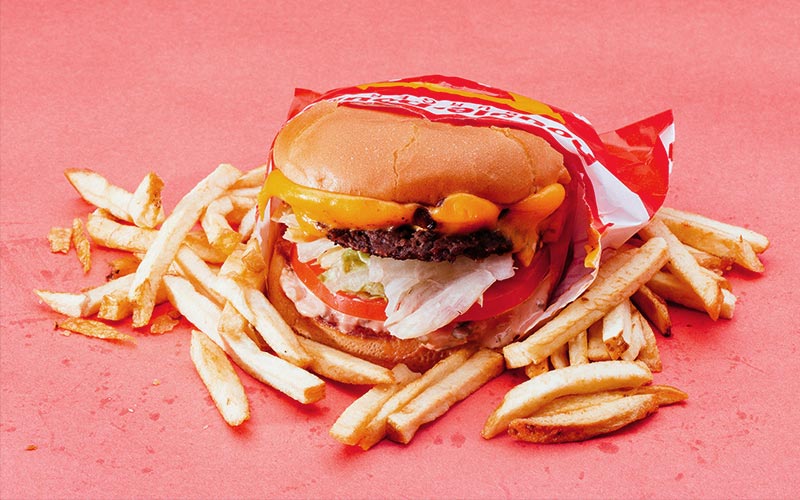
If you’ve recently opened a fast food restaurant or are considering expanding your current business, mastering the critical skills can set you on the path to success in the restaurant industry. It isn’t easy to run a successful fast food restaurant—but reexamining and elevating the details can take you further.
The difference between profitable fast food establishments and ones destined for closure is the management team’s ability to incorporate efficient work procedures, expert analysis of sales and inventory, and consistent adherence to best practices. With that in mind, here are the most important things to know in order in both managing a fast food restaurant successfully and running a fast food chain effectively.
- Defining management levels
- Hire well and reduce staff turnover
- Train your staff
- Make cleanliness and safety a top priority
- Cut down on food waste
- Use the right POS system
- Manage inventory
- Look at customer data to make improvements
Make your expectations clear from the get-go
A restaurant employee handbook is crucial for having a high-performing front and back of house staff. We’ve made templates to make it easier for you to create your onboarding and training materials.
Defining management levels
Depending on the organizational structure of your fast-casual eatery chain, your management team may have the following staff on hand:
General Manager
The General Manager (GM) is responsible for the overall operation of the restaurant. They’re the ‘big boss,’ and all business decisions ultimately pass through them. With national fast food chains like Burger King or Taco Bell, each location will have one general manager.
A good General Manager will have several years of experience as an Assistant Manager, including both kitchen and dining room expertise. While a bachelor’s degree in hospitality isn’t always a requirement, it can enhance their qualifications and pay scale.
Key responsibilities of a General Manager:
- Establish the restaurant’s business plan by surveying demand and demographics
- Maintain operations through improvements to quality, customer service, productivity, systems and policies
- Improve customer satisfaction levels through seasonal menu audits and overall relationship building
- Recruit, train, coach, discipline and manage all front of house (FOH) employees
- Establish and enforce sanitation and safety standards to comply with health regulations
- Track emerging trends in the industry to elevate knowledge and pursue opportunities
- Assist in maintaining budgets and cost controls for FOH and BOH
Assistant Manager
Under the GM, there may be one or a series of Assistant Managers. If it’s the latter, they are further sub-categorized into different areas of responsibility.
Assistant Restaurant Managers are an entry-level position. Many people get promoted to this role because of their successful performance as a cashier or cook.
Key responsibilities of an Assistant Manager:
- Open and close the restaurant; act as a primary key-holder
- Mentor new staff members
- Create employee schedules and coordinate shifts
- Assist in responding to customer inquiries and resolving customer grievances
- Conduct payroll activities in an accurate and timely manner
- Ensure that the restaurant adheres to health and safety regulations
- Record all income and expenses to ensure that cash is balanced
Kitchen Manager
The Kitchen Manager will supervise all aspects of the kitchen such as hiring the kitchen staff, food preparation and purchasing food inventory.
Key responsibilities of a Kitchen Manager:
- Train and manage the back-of-house (BOH) staff members
- Coordinate food orders
- Supervise food prep
- Supervise cooking
- Monitor food quality
- Schedule and coordinate kitchen staff shifts
- Order food supplies and kitchen equipment
- Maintain sanitation and safety standards in the kitchen area
- Keep weekly and monthly cost reports
Hire well and reduce staff turnover
Unless you’re hiring for a manager role, many entry-level fast food jobs pay minimum wage, which can vary by state. Most employees are considered part-time, but there might be a few non-manager full-time employees as well.
To make sure you get the best pool of candidates, create a thorough job description that outlines all the duties the applicant will perform day-to-day, as well as any special circumstances that may arise such as catering an event or corporate lunch. Once you’ve finalized your job description, take the time to post the ad to job boards your ideal employee is most likely to read. For example, Indeed is a great job search platform that caters to a wide variety of job types.
Lastly, although servers and bartenders are tipped employees with the restaurant industry it is becoming more common for staff in fast food and casual to be provided tips as well. Be sure to factor this into your decisions about the amount to pay your staff.
Fast food restaurants see some of the highest turnover rates out of any industry (130%-150%), so don’t get discouraged if you find yourself hiring often. Consider integrating employee management tools into your point of sale system to streamline your operations. Having a system that is easy to use and understand, will keep things up-and-running smoothly between transitions in staff. There are several strategies you can use to help reduce turnover, such as:
- Being as flexible as possible with scheduling
- Setting up team-building activities
- Providing a clear path for growth and development
Train your staff
Just as proper hiring can reduce staff turnover, so can adequate employee training. Employees who understand how to do their jobs are fully aware of what’s expected of them will perform better than those that lack this level of awareness.
Well-trained employees are also efficient employees. Team members who understand the expectations of their jobs can work with less supervision. A competent team reduces the amount of time it takes to complete work. Less time working equals a decrease in labor costs for you.
A well-trained, efficient cook reduces food errors (waste), works efficiently, and probably has plenty of on-the-job knowledge under their belt. The same goes for your front of house staff. A well-trained cashier will reduce order mistakes and get customers through the line faster—all things that have a positive impact on your bottom line.

Make cleanliness and safety a top priority
Now more than ever, it’s important to keep your restaurant clean and your employees and customers safe.
Have a clear sanitation schedule and policy in place to make sure your establishment is as safe as possible. Invest in proper cleaning supplies and PPE for your staff, if necessary.
Cut down on food waste
Your food cost can quickly escalate if you don’t train your staff to make the dishes and portion ingredients properly. If the meal calls for three ounces of chicken but your kitchen staff regularly serves four ounces portions, your chicken costs are going to climb quickly.
We recommend spot checking several times during each shift—weigh the items on a food scale, or with a measuring cup or spoon as your kitchen staff is preparing it. Additionally, your training materials should show detailed photos of what a correctly prepared and portioned menu item should look like. Many fast food restaurants also have these illustrations above the kitchen line for easy reference.
Inventory management plays a central role in minimizing waste. Whether it’s overproduction, spoilage, spillage or incorrect orders—there are steps that can be taken to reduce your footprint. Opting for automated inventory management is one significant way you can create a win-win situation, increasing profits and diminishing unnecessary food loss. An automated inventory management system will revolutionize your process through predictive demand, reducing food costs and overall shrinkage.

Use the right POS system
At the core of any successful fast food business is a sophisticated POS system. Beyond all of the other significant benefits POS software can provide for your business, communication of orders between FOH and BOH is essential for customer satisfaction.
A big part of getting the most from your POS system is being able to learn the tools with ease and transfer that knowledge to staff during onboarding. Lightspeed Restaurant is known for its easy adoption, which is especially helpful in an industry where staff turnover is high. But there are many more value drivers to tap into.
Advance Insights saves you time and money. At a glance, you can see what your peak times are, both during your day and across the week which can create the foundation for smart scheduling. Another bonus is seeing which menu items are generating repeat visits with customer data from each card transaction. Maybe that cajun chicken sandwich isn’t as popular as you think it is! The numbers don’t lie. Assess your top sellers and weakest items, letting that inform changes to inventory and how your menu will evolve.
Payments is another prime consideration to set yourself apart front the pack. A sophisticated payment system can help you create a seamless customer experience—serving options to clientele. When it comes to convenience food, speed is key. An integrated payment processing system accelerates ordering with instant order closing and no human error. Better still, a tip prompt can be configured within the payment terminal to reward your hard-working staff.
Manage inventory
One of the benefits of a great POS system is the ability to manage restaurant inventory. You can track quantities on-hand and set reorder triggers, so you never run out of your most popular items.
Physical inventory management in a fast food restaurant
Managing your physical inventory begins with an organized storage area. Each item should have a home, clearly labeled, and with a ‘par’ set, so you can quickly develop your orders each week.
The items soonest to expire are used first, ensuring that you always have fresh product rotating through. When you put away deliveries, your staff must put the new items in the back and move existing stock to the front to facilitate your “first in, first out” system.
Spot check your deliveries, mainly produce and protein, for quality. If there are sub-par items or a question of freshness, your supplier should replace the item.
Your POS can help you forecast how much of each item you’ll need for the week. Use these numbers to anticipate how much of each ingredient you use in a typical week. For example, if you use six cases of fries on a weekday and ten on the weekend, you can set par levels – the number of each item you have on hand. Make sure you order what you need, and not an excessive amount.
Look at customer data to make improvements
Speaking of best and worst sellers, your restaurant POS can provide reports on what your customers are ordering. If you think everyone loves your Cajun chicken sandwich, but you only sell a few orders per day, perhaps it’s time to eliminate it from your menu. Pick your best sellers, and hone their creation until they’re the best-quality food of their type on the market.
The right tools are a recipe for success
Knowing how to manage a fast food restaurant chain involves many different responsibilities from hiring to inventory management and forecasting. However, with the right tools, the right team and the right leadership you’ll have a recipe for success. You know how to run a successful fast food restaurant—but sustained longevity for your businesses will come from examining and perfecting the day-to-day operations.
Looking for tools to help you manage your fast food restaurant? Talk to one of our experts to see how Lightspeed can help you run your hospitality business efficiently.

News you care about. Tips you can use.
Everything your business needs to grow, delivered straight to your inbox.



